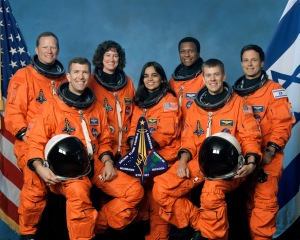Ten years ago today, my younger self sat down on a bean bag in front of the telly. I tuned into BBC News 24. A Space Shuttle was about to land, and I was going to watch it live.
I was only 12, and had recently been captivated by the Space Shuttle Program. I’d get up in the middle of the night, watch, and record on VHS, shuttle launches. They were enthralling. Now I sat down to watch, what I think should have been, my first shuttle landing. The date: Saturday 1st February 2003.
Everything seemed to be going smoothly, but as it progressed there were no pictures of the shuttle passing through 200,000ft. Still, I didn’t know any better. A few minutes later the time remaining to landing hit zero. Then the horrific pictures started to come in. The Space Shuttle Columbia had been lost.
Unlike the majority of Space Shuttle missions at the time, to develop the International Space Station, this mission was purely scientific. It carried the SPACEHAB module, where all of the experiments would be conducted. There were biological sciences, life sciences, combustion sciences, atmospheric sciences, physical sciences experiments and more to be conducted on this mission.
A lot of data was lost when Columbia disintegrated, but some data was downlinked during the mission, some of which is helping us down here today. Some include:
- Combustion chemistry experiments have helped to develop cleaner burning engines
- Experiments involving soot and how it can be used as a useful industrial product
- An atmospheric experiment discovered a new atmospheric phenomena called Transient Ionospheric Glow Emission in Red
- An experiment looking into the use of fine water mists to aid firefighting techniques
- An experiment into the development of prostate cancers
The results of these experiments have benefited us down here on Earth, and so I’d like to thank the crew of STS-107 for their efforts to further the human race.
Per Ardua ad Astra
Sources: NASA Space Research, Freestar Report, Science Gained from STS-107












